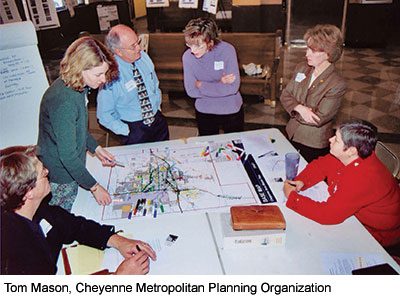From time to time we’ll cross-post interesting items from other blogs including the official Forest Service new rule blog. In my view, Ray Vaughan is a real leader in our world of seeking peaceful solutions to Forest Service land management issues. I got to know him by seeing him work on the RACNAC (national roadless advisory committee). It is no small part due to the work of people like him and Dale Harris and the others that I have such a positive feeling about formal FACA committees for seemingly intractable and (unnecessarily, in my view) politicized national disputes. The kind of disputes that end up spending years in court and keep agreements from being made and all of us from moving on to a decision about how to protect, connect, restore and sustain. I think a FACA committee can do a better job of making a recommendation for a decision worth sticking to than a judge who is ruling on specific (relatively narrow, in my view) legal issues. But that’s probably another post.
As one of the “ecos” Fotoware seems so afraid of, and so ignorant of, let me say that I applaud this effort at a collaborative development of a new NFMA rule. The NOI was the most thoughtful and thought-provoking scoping document I have ever seen from any agency. Exceptional! If the rest of the process meets the same standards, we will have a final rule that will not just survive the courts (regardless of what side dues) but will THRIVE and really set the course for a new century of management for the Forest Service. Yes, I said “management.” As an “eco,” I want nothing more than sound, science-based management from the USFS. As an “eco,” I have signed off on, approved and even been the instigator for more than 300,000 acres of ACTIVE management (read, logging and burning and more) on our National Forests. Real restoration work has been done in many forests and can be done successfully on ALL of them. This is not the time to keep minds closed on any side of the issues. We need to be open and honest and work cooperatively to find a set of regulations that will allow the agency to effectively protect what needs protecting, restore what is damaged or lost, and then maintain all that into the future against the external impacts of climate change, population growth, and more. All tools need to be available, including silvicultural ones. All people who care need to be involved. All judgments of others and their motivations need to be suspended. All efforts at finding the common ground that is there need to be explored. I have been involved with National Forest management for 27 years. I have never seen a better opportunity to find real solutions to make this agency what it is meant to be, to give these public forests a new century of success. Thanks to the great efforts of the USFS thus far, including the great NOI and this blog. I look forward to making this new rule the one that really works, legally and on the ground.





